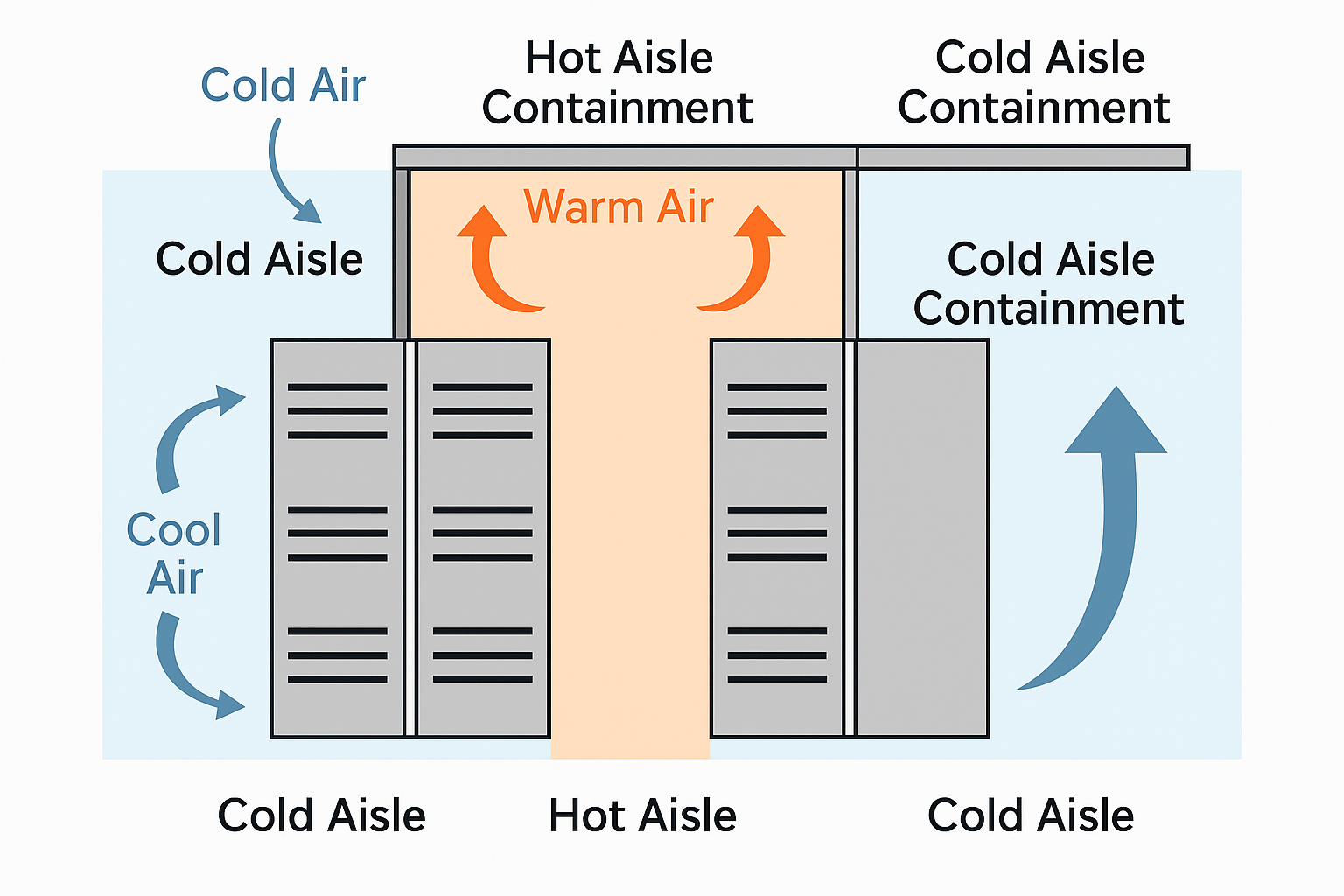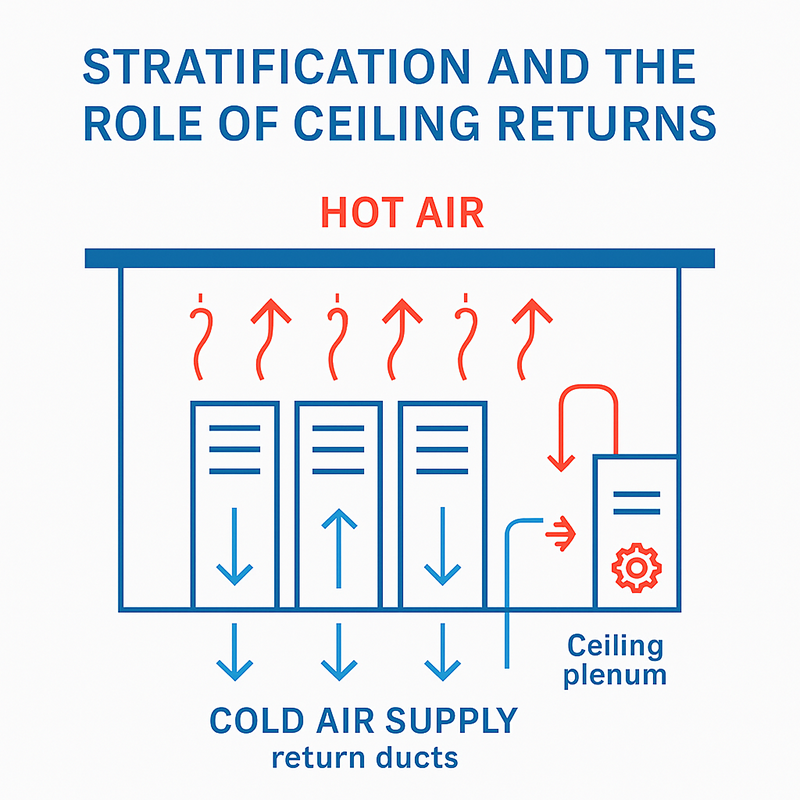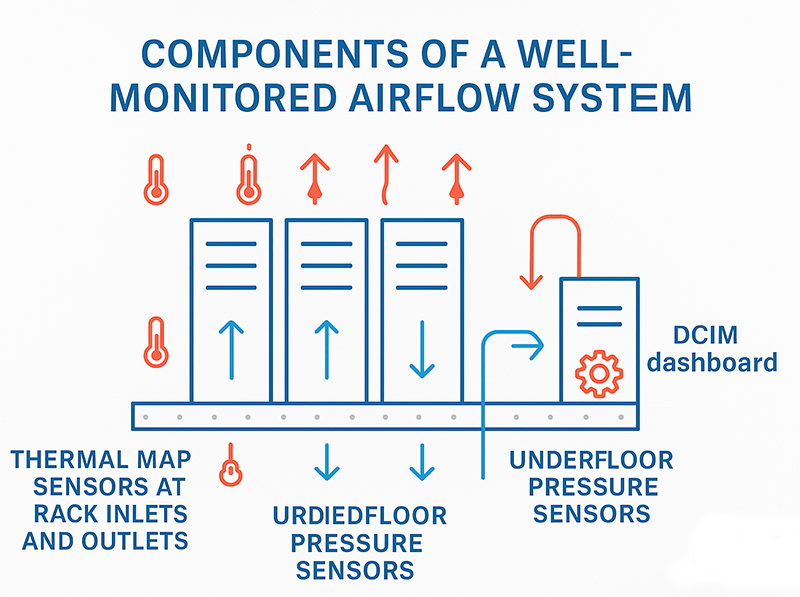Rethinking Data Center Air Circulation Strategies
Rethinking Data Center Air Circulation Strategies: From Legacy Layouts to Modern Cooling Efficiency
Modern data centers are under pressure to support increasing power densities brought on by advances in IT equipment such as multicore processors, virtualization, and blade servers. As server racks become more densely packed, the resulting heat loads require innovative and efficient air circulation strategies. Poor airflow design not only reduces cooling efficiency but also drives up energy costs and risks equipment failure.
In this article, we explore how data center operators can rethink airflow management through strategic containment, monitoring, and the adoption of both traditional and emerging cooling technologies.
The Challenge: Rising Thermal Loads in Compact Spaces
As more computational power is packed into smaller form factors, data centers face heat densities exceeding 20kW per rack. Traditional cooling approaches struggle to adapt to this reality, especially when relying on legacy “chaotic airflow” methods — uncontrolled air circulation without a clear direction from supply to return. Such designs lead to recirculation and mixing of hot and cold air, diminishing the effectiveness of cooling systems.
Understanding Airflow Strategies: From Chaos to Containment
Uncontrolled (Legacy) Airflow
In older facilities, cooling is often provided through raised floors with perforated tiles. Cool air is distributed with no guidance for its return, leading to inefficiencies. This non-contained method—often referred to informally as “chaotic airflow”—can cause cold air to bypass hot components or mix with hot exhaust, reducing temperature differentials (∆T) and efficiency.
Hot Aisle and Cold Aisle Configuration
Modern layouts use alternating hot and cold aisles to separate intake and exhaust air streams. However, without physical containment, air still mixes at aisle ends or above racks. The strategy improves organization but is often insufficient in high-density environments.
Containment Strategies
Cold Aisle Containment (CAC): Encloses the cold aisle, ensuring that supply air reaches server intakes directly. Hot air fills the remaining room volume and is returned to CRACs.
Pros: Protects server intakes from hot air contamination.
Cons: Room becomes the hot plenum; requires heat-hardened equipment.
Hot Aisle Containment (HAC): Encloses the hot aisle, capturing exhaust air before it mixes with room air.
Pros: Higher return air temperature improves CRAC efficiency.
Cons: May be uncomfortable for staff; installation complexity can vary.
Properly implemented containment improves ∆T and reduces bypass air, directly impacting energy efficiency and cooling effectiveness.

ASHRAE Guidelines and Industry Standards
The American Society of Heating, Refrigerating and Air-Conditioning Engineers (ASHRAE) provides industry standards for temperature and humidity ranges:
Recommended temperature range: 18°C to 27°C (64.4°F to 80.6°F)
Recommended humidity: 20% to 80% relative humidity (non-condensing)
Monitoring adherence to these guidelines ensures equipment longevity and energy efficiency.
Monitoring for Optimization
Effective airflow management requires real-time visibility. Temperature sensors, thermal maps, and differential pressure sensors help identify hot spots, bypass air, and inefficient recirculation.
AKCP’s cabinet thermal map sensors provide detailed intake and exhaust temperature readings across multiple rack units. Combined with DCIM software, operators can analyze airflow anomalies, improve containment strategies, and achieve optimal ∆T performance.
The Role of Airflow Dynamics
Venturi Effect
In containment systems, the Venturi Effect accelerates air as it moves through narrowed passages, influencing pressure differentials and flow rates. Understanding these effects helps in designing efficient ducting and airflow paths.
Stratification
Hot air naturally rises, forming thermal layers. Without guided return airflow, this stratification can trap heat above racks, increasing return temperatures and reducing CRAC efficiency. Ceiling returns or chimneys mitigate this issue.

Beyond Air: Emerging Cooling Technologies
While air remains the primary medium for heat removal, liquid cooling technologies are gaining traction:
Direct-to-Chip Cooling: Transfers heat via cold plates in direct contact with CPUs and GPUs.
Immersion Cooling: Submerges components in dielectric fluid for highly efficient heat transfer.
These systems support rack densities beyond 40kW and are ideal for HPC and AI workloads.
Measuring Efficiency: The PUE Metric
Power Usage Effectiveness (PUE) = Total Facility Power / IT Equipment Power
Lower PUE indicates greater efficiency. Effective airflow and containment strategies help reduce cooling overhead and move the facility closer to a PUE of 1.0.
Conclusion: A Strategic Approach to Air Circulation
As data centers evolve, so must their cooling strategies. By implementing structured airflow designs, leveraging containment, and adopting intelligent monitoring, facilities can reduce energy costs, increase equipment reliability, and prepare for future high-density workloads.
Whether upgrading a legacy facility or designing a new site, airflow strategy should be at the core of your thermal management plan.

